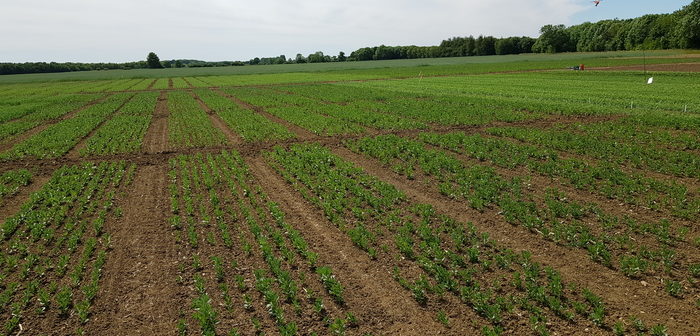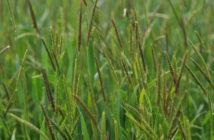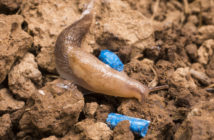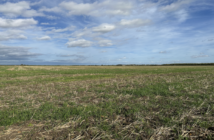Maintaining outputs and yields with reduced fungicide inputs, through judicious bio-stimulant application
Sustainable and profitable protein crop production can be achieved with reduced fungicide inputs, by balancing applications of naturally sourced amino acid-based biological stimulants, trials and on-farm experiences confirm.
With proven results in on-going trial programmes over more than four years, the AminoA range of bio-stimulants are now showing positive commercial responses in legumes, at a time when there is even greater responsibility on farmers to meet sustainability and responsibility goals, alongside growing pressure for domestically produced protein sources, as an alternative to imported soya.
In line with ELM Tier 1 objectives, which are primarily to reduce pesticide use, improve soil health, reduce nitrate use and promote sustainable farming systems, bio-stimulants can provide tangible and practical benefits for protein crop production, meeting these goals with no adverse impact on the bottom line.
“Farmers need to farm, not be park keepers,” explains AminoA managing director, Richard Phillips. “It is crucial that we can maintain farm outputs and profitability under any scheme that replaces BPS, and farmers need the right tools to achieve this.
“AminoA bio-stimulants, including the highly concentrated liquid natural amino acid complex, AminoA FLO, alongside AminoA GRO, suitable for use in organic production systems, are achieving significant yield responses, as replicated trials and customer feedback indicates,” he adds.
One exponent of the benefits of bio-stimulant applications on protein crops is James Robinson, director of Measures Farms in Northamptonshire, and winner of the 2020 ADAS Pea YEN award.
Mr Robinson explains, “My agronomist Helen Baxter and I have slowly built up our use of AminoA FLO over the last four years, and now use it fairly religiously across all crops grown on my farm. There has been good response with growth and development of the crops as a result of adding the product in with other formulations.”
Measures Farms achieved the highest yields over 21 Pea YEN field entrants in 2020, with his Marrowfat pea crop (var Kabuki) achieving a 5.1t/ha yield, against an average of 3.7t/ha. Nationally, the average yield of standard combining peas in 2020 Recommended List trials was 2.7t/ha, while average farm yields of pea crops in the UK in 2020 were 3.2t/ha (provisional Eurostat data).
“Overall, it has helped reduce our pesticide spend, particularly on our fungicides. We have been able to reduce the applied rate, with caution and regard for resistance strategies and good practice, as the AminoA FLO has appeared to have increased the health and ability of the plants to utilise the applied products. This has to be a plus in terms of sustainability goals in the future,” adds Mr Robinson.
Independent agronomist Helen Baxter adds, “I use the product to aid quick and even establishment of crops, and at key major development and growth stages. The aim being to promote foliar and root growth, leading to forward, even crops and to enable the plants to produce excellent pod and seed numbers. Later drilled crops also visually appear to benefit with quicker early growth and leaf and root development.”
Trials
PGRO spring bean (var Fuego) trials in 2020 showed a significant 680kg/ha response over the control, with a 4.46t/ha yield. A 410kg/ha response was recorded on a single spray programme.
NIAB trials in Hampshire on Marrowfat peas (var Sakura) recorded a statistically significant yield increase from a 3-spray AminoA programme (50% groundcover, first flowers emerging, first pods setting).
“Interestingly the fungicide only programmes at both high and low rates supressed yields to less than that of the untreated plots,” explains Mr Phillips. “Fungicides are an essential tool in the farmers portfolio, but overuse is environmentally damaging. When the disease level is low, fungicides can put stress on the microbiology of the plants.
“When AminoA was included with the fungicide, it appears to have mitigated some of the damage that the fungicide had caused, and yields increased to a similar level to the untreated,” he adds.
With Marrowfat peas currently worth approximately £330 per tonne, AminoA could significantly improve grower margins.
In north west Germany, organic farmer Tobias Klenke also witnessed significant yield responses on winter peas and beans in 2020, in both cases seeing between 4-5 t/ha, depending on the fields and soil quality, with just one spray of AminoA GRO.
“We saw about 40% less pods in the untreated peas, and less pods and tillering on untreated beans. I was very impressed, and after just one week you could see a response after spraying,” he explains.
With organic peas and beans achieving €450 per tonne in Germany, Tobias will continue with the AminoA treatments this season, and is considering a second spray with such high returns available.
“These yield results and the trial data show the response from the application of AminoA products. Furthermore, when our products are combined with agrochemicals and trace elements, they enhance their uptake (3x more Cu), and therefore allow rates to be reduced without affecting performance,” concludes Mr Phillips.




